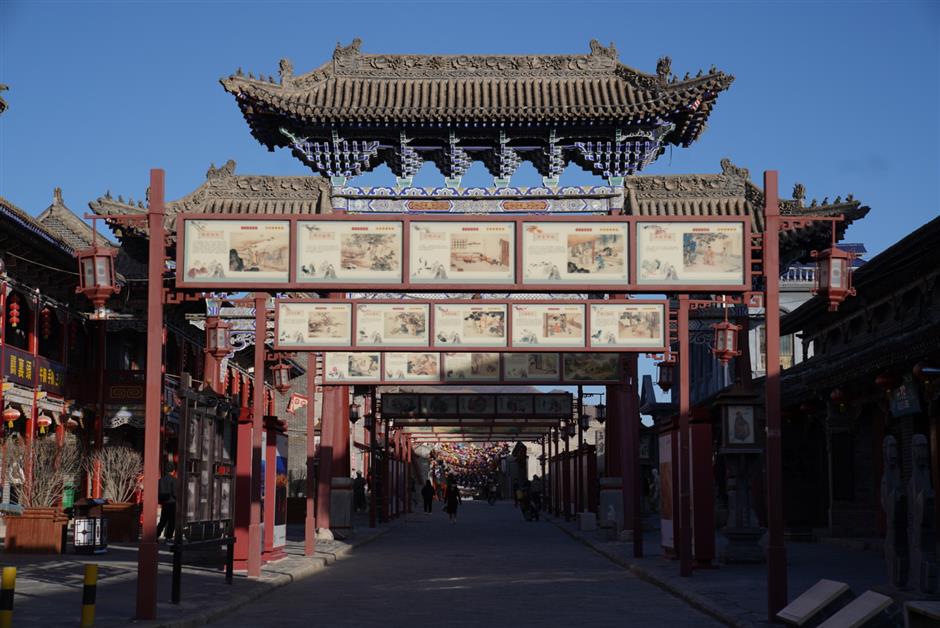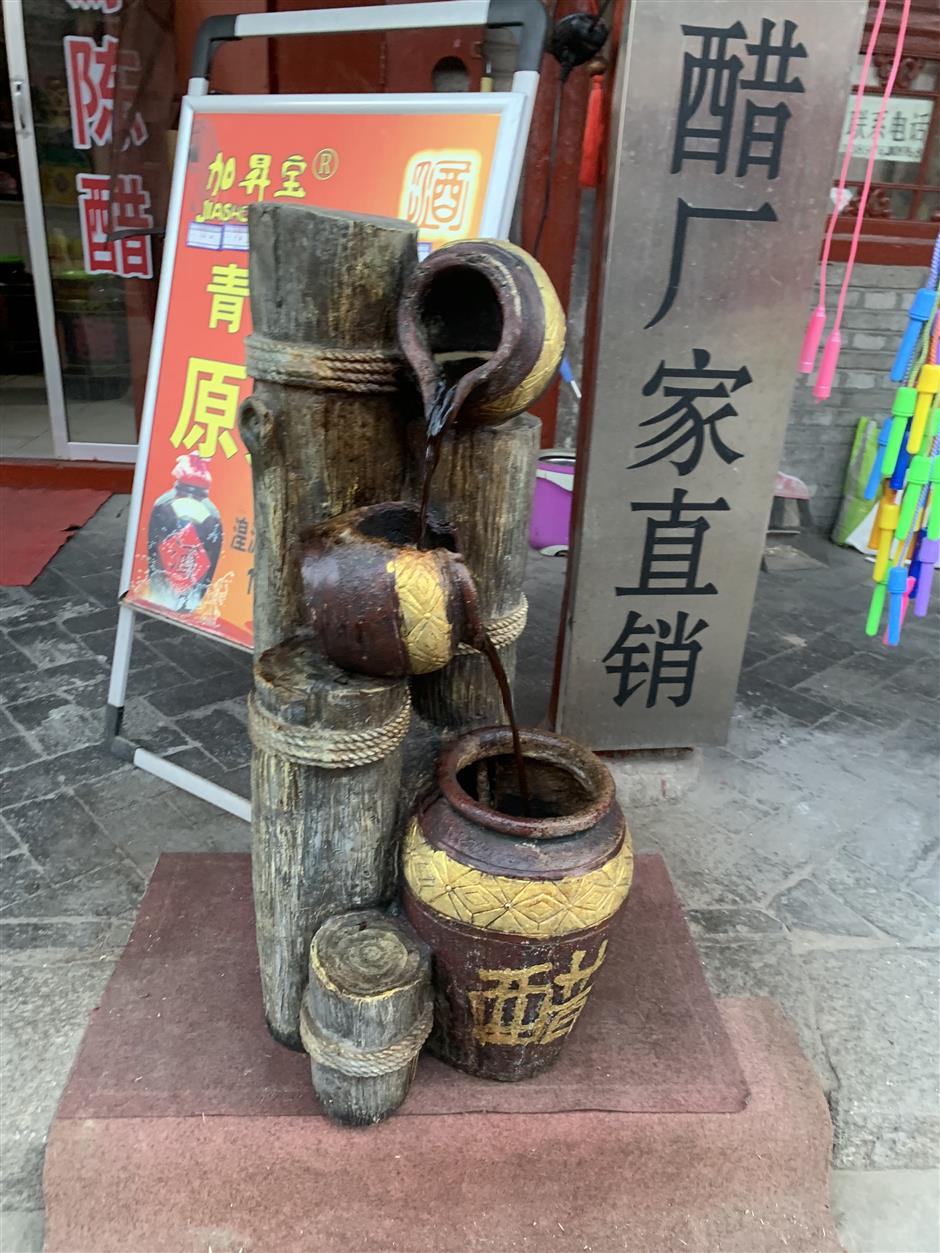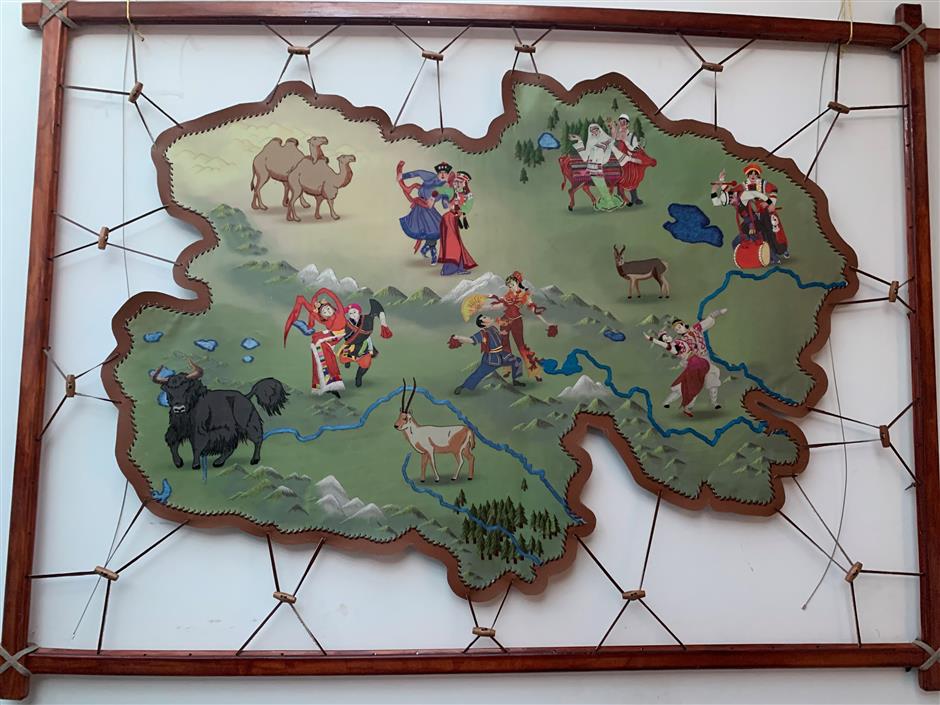Dange'er in Qinghai is a historical treasure trove

A bird's-eye view of the Dange'er Ancient Town
Dange'er, the Tibetan name for the castle where the Huangshui and Yaoshui rivers in Qinghai Province meet, Is a culturally rich border town of commerce and trade.
Local educator Yang Zhiping (1866-1936) named it "Huangyuan," or the source of the Huangshui River, in 1913.
During the Xia, Shang, and Zhou dynasties, including the Warring States Period (475-221 BC), the ancient Qiang people (羌族) lived in the town at the foot of Riyue Mountain in the east of the Tibetan Plateau. The neighborhood now includes Han, Tibetan, Mongolian, Hui, and Tu people. The Qiang people integrated into Han or Tibetan nationalities, while others migrated to Sichuan, Shannxi, Guizhou, and Hubei provinces. They number about 300,000 in China today.
Dange'er held a Qinghai Lake sacrifice rite on July 15 in honor of Queen Mother of the West (西王母), an immortal goddess of Mount Kunlun, through the Arching Sea Gate (拱海门). Most imperial dignitaries who presided over the lake sacrificial ceremony passed through the gate and traveled for seven or eight days to reach the lake.

The Arching Sea Gate
The city god temple
The town's city god temple honors an Eastern Han Dynasty (AD 25–220) military officer who protected Qiang.
"The Qiang were a small community that revered the war dead but felt ashamed of themselves for their sickbed deaths. They would often end up committing suicide, said Zhang Haijing, a town guide.
In AD 88, Deng Xun became Dange'er's provincial military officer and transformed the Qiang's concept of death by promoting medical care. He would send his men to get an ill Qiang and drag him for treatment.
In 1776, the Qing Dynasty (1644–1901) built the city god temple to honor Deng. Visitors often pay their respects to him at its entrance.
The courtyard preserves an antique stage with a drum on the left and a bell to strike the hours.

The ancient stage inside the city god temple
The walkways are paved with stones (河湟石) , resembling coins for riches and lotuses for beauty and youth.
Most worshippers visit the temple on the first and fifteenth days of the lunar month and light baixiangzi (百香籽) (100 fragrance seeds) during prayers.
The foreign missionary
Walking along the artery route, there is a photo exhibition of the northern town's former society, economy, ethnic groups, religions, folk customs, architecture, transportation, shipping, food cultures, clothing, arts, and scenery.
Victor G. Plymire was a US missionary who preached in Dange'er after the Opium War (1840–1842) and was a skilled photographer. Most of the exhibits are from his collections.
Plymire lived in Qinghai for 28 years with his family before heading back to America in 1949.
Plymire organized activities at the church such as weaving, rope twisting, and garment making that helped improve the economic conditions of the locals. He offered medical help to people in Dange'er and was the only missionary who could communicate in the Qinghai dialect at the time.
A massacre took place in Dange'er on February 15, 1929, during the Republic of China (1912–1949) era.
"The whole town was deathly still as the dawn light began to show... The sound of the massacre and the screams incessantly lingered on and could be heard everywhere," Plymire wrote in his account of the incident.
He and his wife reportedly performed surgery on the patients around the clock, saving the lives of over 100 badly injured people.

Victor G Plymire is dressed in a Tibetan robe in Dange'er Ancient Town during his first visit to China in 1908.
David V Plymire, son of Victor G Plymire, raised 4.5 million yuan (US$629,401) in the 1980s to buy a complete set of advanced medical equipment for the People's Hospital of Huangyuan County, where he spent his early childhood.
The legendary princess
The Huangyuan County Museum displays 3,840 cultural treasures. A Kayue Culture bronze bird scepter head and a copper barking dog and cow scepter head from 2,000 years ago are among the highlights.
The former has a hollow stone underneath its bronze bird that whistles in the wind, and the latter has a rare sculpture of a cow gently breastfeeding its baby with a barking dog watching them.

The copper barking dog and cow scepter head
The museum has also recorded stories of the legendary Princess Wencheng, daughter of Emperor Taizong of the Tang Dynasty (AD 618–907), who married the Tibetan King Songtsen Gampo to improve bilateral relations between Tang and Tubo.
According to folklore, the princess received a mirror as a gift from her mother before leaving. The magical mirror, which had one half in the shape of a moon and the other half in the shape of a sun, was able to reflect scenes from her birthplace as well as the facial contours of her family members.
When her convoy crossed the Riyue (sun and moon) Mountain (日月山) near Dange'er, the princess couldn't help but feel homesick.
She took out her mirror, but remembered her role as an envoy of peace and threw it away. The mirror broke into two halves, one on the eastern side of the mountain and the other on the western side.
Dange'er residents later built two pavilions on Riyue Mountain, each with a bronze mirror. The Sun Pavilion (日亭) has a round mirror, and the Moon Pavilion has a crescent-shaped mirror (月亭).
A poet of the plateau
The ancient street of Dange'er is still buzzing with life, despite its old mansions of historic personalities and boudoirs from which we can envision the fettered lives of girls of respectable families of the past.
Some descendants of the old families still remain in their old homes, and a primary school has been established near the historic town's Confucius Temple in the hope that those men of letters from the past can bless the children.
In addition to the statue of Confucius, the renowned philosopher and educator of ancient China, two lilac trees and the city flower of Xining, which administers Huangyuan County, stand in the temple courtyard.
The Confucius Temple's corridors connect to the Huangyuan Chengguan No. 1 Primary School. A memorial to the late poet Wang Changyao (1936–2000) can be seen in the school's second courtyard.
Wang was born in teh central Hunan Province to a household of seven siblings. He lost his mother when he was 14 years old. He joined in the Korean War (1950–1953) and was sent back after being critically injured in an US air attack.
Wang began writing poems on the Korean battlefield. After returning to China, he applied for a position with the country's West Regions Development and moved to Dange'er, where he married a local Tibetan girl.
He later returned to Qinghai Lake magazine as its poetry editor.
In 1989, the poet completed his epic masterpiece "Harakutu (哈拉库图)." Harakutu was a military castle used to deploy troops near Riyue Mountain.
Wang visited Russia in 1998 as part of a Chinese writers' delegation and penned his poem "A Chinese Poet in Russia."
In March 2000, the poet committed suicide after battling with lung cancer.

The Confucius temple and the county primary school are adjacent to each other.
Historic figures have left their imprints on this town . It is also welcoming visitors to learn about its past and present development.

The first treasure of Huangyuan: lined light 排灯

The second treasure of Huangyuan: vinegar

The third treasure of Huangyuan: leather embroidery
If you go:
Dange'er in Xining City, Qinghai-Tibet Plateau, is 2,900 meters above sea level and can cause altitude sickness. Drink lots of water and eat enough carbs. Summer is the best time to visit Xining.

The lantern-lit ancient street of Dange'er.















